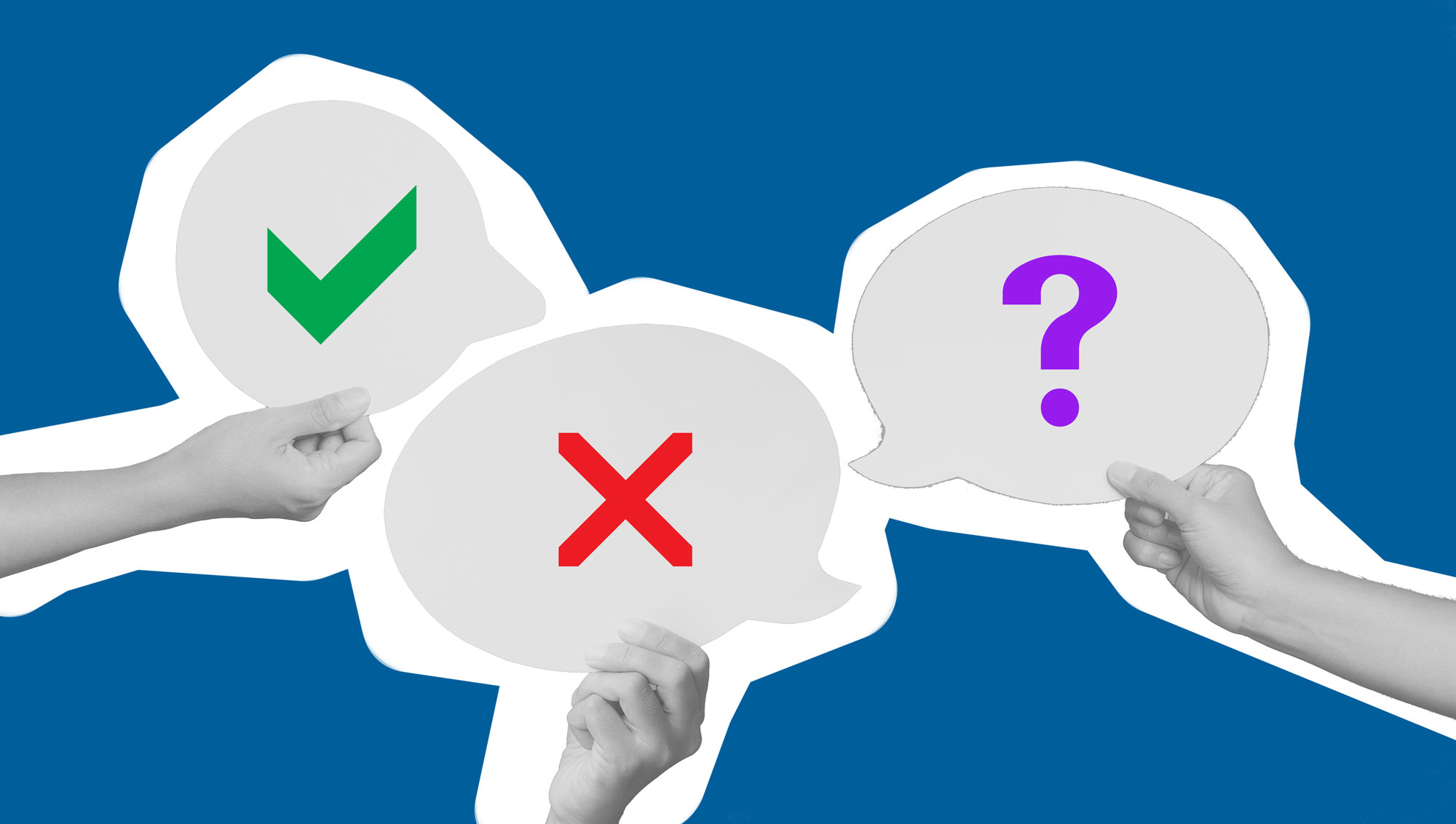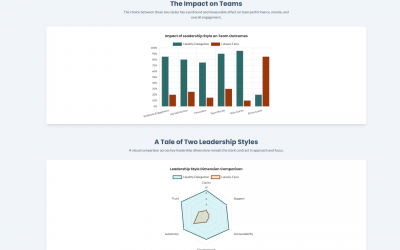Introduction
The Myers-Briggs Type Indicator (MBTI) serves as a valuable framework for understanding the diverse psychological preferences that shape individual behavior and interactions. Among the four dichotomies explored by the MBTI, the preference for Extraversion (E) or Introversion (I) is fundamental, influencing how individuals direct and receive energy and, consequently, their communication styles. Effective communication is paramount in both personal and professional realms, fostering strong relationships and productive collaborations. However, the inherent differences in communication preferences between extroverts and introverts can sometimes lead to misunderstandings and challenges if not properly understood and addressed. This report aims to explore these potential communication hurdles and provide practical, evidence-based strategies that both extroverts and introverts can employ to enhance their interactions and cultivate more effective communication in various settings.
Defining Extroversion and Introversion within the MBTI Framework
Within the MBTI framework, Extraversion (E) and Introversion (I) are defined as natural orientations of energy and focus. These preferences, rooted in Jungian psychology, describe the primary direction in which individuals channel their mental energy. Those with a preference for Extraversion are energized by engaging with the external world, drawing vitality from interactions with people, activities, and their surroundings. They often find enjoyment in social gatherings and actively seek out opportunities for connection. Conversely, individuals who lean towards Introversion find their energy replenished through introspection and engagement with their inner world of thoughts, ideas, and reflections. They typically value solitude and quiet contemplation as sources of rejuvenation. It is important to recognize that everyone experiences both extraverted and introverted moments throughout their day; however, most individuals have a dominant preference that feels more natural and comfortable.
It is crucial to distinguish the MBTI definitions of extroversion and introversion from common societal interpretations that often equate extroversion with mere sociability and introversion with shyness. Carl Jung’s original intent was to describe the preferred focus of energy rather than social behavior. Consequently, an individual can be a shy extrovert, feeling energized by social interaction but hesitant to initiate it, or an outgoing introvert, comfortable in social settings but requiring significant alone time to recharge. The fundamental difference lies in where individuals find their primary source of energy and comfort.
Furthermore, the preference for Extraversion or Introversion exists along a continuum rather than as a strict binary choice. Many individuals fall somewhere in the middle of this spectrum, exhibiting characteristics of both extroverts and introverts; these individuals are often referred to as ambiverts. Ambiverts can adapt their behavior depending on the specific situation and their current energy levels. The MBTI Step II assessment acknowledges this nuance by identifying midzones within the preference scales.
Communication Characteristics and Preferences of Extroverts
Individuals with a preference for Extraversion typically exhibit communication behaviors that are active, energetic, and enthusiastic. They often process their thoughts and ideas verbally, a characteristic known as “thinking out loud”. This means they frequently use conversation as a tool for exploring and understanding concepts. Extroverts tend to share their thoughts, feelings, and information readily, often expressing them as soon as they come to mind. Their communication style is generally open and expressive, making them appear approachable and easy to get to know.
In conversations, extroverts might shift topics and adjust their opinions as the dialogue progresses, reflecting their external processing and the influence of social interaction on their thinking. They typically have a wide range of interests and can comfortably discuss various subjects. Extroverts generally talk more than they listen and may sometimes interrupt or speak over others, not necessarily intending to be rude, but driven by their enthusiasm and rapid verbal processing. They also frequently ask spontaneous questions as they explore ideas externally.
Extroverts show a strong preference for verbal communication and often learn most effectively through talking and discussing ideas with others. They tend to initiate conversations and are usually comfortable in social settings. Socializing in larger groups is often enjoyable for them, and they are typically adept at small talk and building connections. Brainstorming and working in group environments tend to energize them as these activities provide opportunities for external processing and social interaction. Extroverts often operate at a faster pace, thinking and acting relatively quickly. They might prefer phone or video calls over email for more immediate interaction and processing.
The defining characteristic of extroverts is that they gain energy from spending time with others. This can occur in various settings, whether in large groups or one-on-one interactions, and with people they know or have just met. Extended periods of solitude can be draining for extroverts, potentially leading to feelings of listlessness or decreased motivation. They actively seek external stimulation and generally thrive in social environments.
Communication Characteristics and Preferences of Introverts
In contrast, individuals with a preference for Introversion are often perceived as quiet, reserved, and thoughtful. They tend to be more private and contained in their communication style. A key aspect of their communication is their tendency to “think before speaking”. Introverts process information internally and typically require time to reflect on their thoughts before verbalizing them.
Introverts often find written communication more effective, as it allows them the necessary time to organize their thoughts and express them with clarity. They tend to be more comfortable sharing their thoughts and feelings in written form. Introverts generally prefer smaller, more intimate conversations with one or two people rather than engaging in large group discussions, which they can find overwhelming. They are typically good listeners, often absorbing more information than they actively speak. Introverts often prefer to observe and analyze situations before participating. They might focus on a few specific interests, exploring them in depth rather than having a wide range of more superficial interests. Their conversations might be less varied in topic but delve into greater detail.
The primary way introverts gain energy is by spending time alone, engaging in internal reflection on their thoughts and ideas. Solitude allows them to recharge their social batteries. They can be easily overwhelmed by excessive sensory input from sounds, smells, colors, and social interactions. Introverts appreciate quiet environments that facilitate concentration and internal processing.
Analyzing Potential Communication Challenges
The fundamental differences in how extroverts and introverts process information and derive energy can lead to several communication challenges when these two personality types interact. These challenges often manifest in conflicts related to conversation pace and flow. Extroverts, who tend to think aloud and respond quickly, may unintentionally interrupt introverts who require more time to formulate their thoughts. Conversely, the pauses introverts take for reflection might be perceived by extroverts as disengagement or a lack of interest, leading them to fill the silence or move on before the introvert has had a chance to contribute.
Differences in topic depth and breadth can also create friction. Extroverts often enjoy exploring a wide array of topics, sometimes briefly, reflecting their broad interests and external processing style. This can contrast with introverts who typically prefer to focus on a few subjects in greater depth, engaging in more profound and meaningful conversations. This difference can lead to extroverts perceiving introverts as overly intense or focused, while introverts might find extrovert conversations superficial or lacking substance.
The differing needs for social interaction frequency and intensity between extroverts and introverts can also pose challenges. Extroverts thrive on frequent social engagement and may actively seek it out to feel energized. This can be difficult for introverts who require significant alone time to recharge after social interaction and might feel overwhelmed by the frequency or intensity desired by extroverts. Introverts might be perceived as avoiding or uninterested in socializing, while extroverts might be seen as overly demanding of social time.
The fundamental difference in how extroverts and introverts gain and expend energy can lead to significant communication challenges and misunderstandings. Extroverts might not understand why introverts need so much alone time and might interpret it as rejection or a lack of interest. Conversely, introverts might feel drained and overwhelmed by the extrovert’s constant need for social engagement, leading to frustration and potential withdrawal.
Furthermore, differing communication styles can lead to misinterpretations. Extroverts, who value outward expression and verbal participation, might misinterpret an introvert’s quiet demeanor and need for reflection as disengagement, lack of interest, or even disagreement. They might assume silence indicates a lack of opinion or contribution. Introverts, who prefer a slower pace and more thoughtful communication, might perceive extroverts as overwhelming, inconsistent, or unpredictable due to their tendency to think aloud, jump between topics, and engage in rapid-fire questioning. Introverts might find the extrovert’s need for constant external processing and stimulation draining and might feel pressured to keep up with a communication style that is not natural to them. Introverts’ preference for internal processing might also be misinterpreted by extroverts as being withholding, evasive, or secretive.
| Feature | Extrovert | Introvert | Potential Challenge |
| Energy Source | External interaction with people and activities | Internal reflection and solitude | Differing needs for social engagement and recharging. |
| Communication Style | Talkative, thinks aloud, expressive | Reflective, thinks before speaking, reserved | Extroverts might dominate conversations; introverts might be perceived as disengaged. |
| Conversation Pace | Faster, rapid responses | Slower, needs time to process | Extroverts might interrupt; introverts might feel rushed or unable to contribute. |
| Topic Focus | Broad range of interests, many topics | Few interests in-depth, deeper dives | Extroverts might skim topics; introverts might find conversations superficial. |
| Communication Mode | Prefers verbal communication (talking) | Prefers written communication (writing) | Misunderstandings in preferred communication methods. |
| Social Interaction | Enjoys large groups, frequent interaction | Prefers small groups, less frequent interaction | Potential conflict in social activity preferences. |
Communication Strategies for Extroverts Interacting with Introverts
To communicate more effectively with introverts, extroverts can adopt several practical strategies. Practicing active listening is crucial; this involves consciously focusing on what the introvert is saying rather than planning their own response. Extroverts should make a deliberate effort to allow for pauses in the conversation, recognizing that silence for an introvert often signifies reflection, not disengagement. Interrupting should be avoided; instead, extroverts should allow introverts to fully articulate their thoughts without being cut off.
Giving introverts sufficient time to think and respond is also essential. Extroverts should refrain from putting introverts on the spot or demanding immediate answers. Recognizing that introverts often need to reflect internally before speaking and might not have an immediate response is key; patience is vital in these interactions.
Respecting an introvert’s need for quiet and personal space is paramount. Extroverts should be mindful of the environment and choose quieter settings for conversations when possible. Understanding that an introvert’s need for solitude is not a sign of disinterest or avoidance but a way for them to recharge their energy is crucial.
Communicating through writing can be a particularly effective strategy when interacting with introverts. Providing information or an agenda in advance, especially for important discussions, allows introverts time to prepare and formulate their thoughts.
Focusing on one topic at a time during conversations can also be beneficial, allowing for deeper exploration rather than rapidly switching between subjects. To encourage participation, extroverts can ask direct questions to invite the introvert’s perspective and create space for them to contribute without having to compete with more vocal personalities. Finally, extroverts should be mindful that introverts might be more sensitive to criticism and should deliver feedback thoughtfully and constructively, allowing time for reflection.
Communication Strategies for Introverts Interacting with Extroverts
Introverts can also employ specific strategies to enhance their communication with extroverts. Practicing speaking up and actively sharing their thoughts is important. Introverts should make a conscious effort to contribute to conversations and not assume that extroverts can discern their thoughts without them being verbalized. Actively participating in discussions, even with brief and well-considered comments, can ensure their perspectives are heard.
Signaling their need for processing time can also be effective. Introverts can use phrases like “I’m just thinking that through” to indicate they need a moment before responding, giving the extrovert a cue to pause. Communicating their internal processing needs can help manage expectations and prevent their quietness from being misinterpreted.
Being prepared to contribute in faster-paced conversations can increase an introvert’s comfort level. Preparing for discussions or meetings in advance by outlining key points or potential questions can help them feel more confident and ready to participate. If an agenda is not provided, proactively asking for talking points beforehand can provide valuable preparation time.
Clearly expressing their communication preferences is also beneficial. Introverts should communicate their preferred methods of interaction, such as email over phone calls, to extroverts. They can also indicate early in a conversation if they might need a moment to think before responding.
Actively participating in discussions, even if briefly, is important. While large group settings can be draining, making an effort to contribute, even with a few thoughtful comments, ensures their perspectives are considered. Developing nonverbal cues, such as smiling and nodding, can also signal engagement to extroverts.
Managing their energy levels during interactions is crucial for introverts. They should be aware of their limits and not feel pressured to engage in high-energy discussions for extended periods if it is draining. Taking short breaks or limiting their exposure can be helpful strategies. Structuring their day with dedicated time for focused work and responding to messages can also help manage their energy and prevent feeling overwhelmed by constant interaction. Finally, while introverts value solitude, being open to some level of social interaction can help build rapport and facilitate communication with extroverts who thrive on connection.
Fostering Better Understanding and Communication
Cultivating effective communication between extroverts and introverts hinges on mutual respect and an appreciation for the inherent value of different communication styles. Neither style is inherently superior; they simply represent different ways of processing information and interacting with the world. Empathy plays a vital role; both extroverts and introverts should strive to understand and respect each other’s perspectives and needs. Extroverts should recognize that an introvert’s quietness does not necessarily indicate disinterest, and introverts should understand that an extrovert’s talkativeness is not necessarily an attempt to dominate. Recognizing and valuing the unique strengths that each style brings is also essential. Introverts often offer thoughtful insights and strong listening skills, while extroverts contribute energy, enthusiasm, and strong interpersonal connections.
Numerous resources are available to further enhance understanding and communication between extroverts and introverts. Books such as “Quiet: The Power of Introverts in a World That Can’t Stop Talking” by Susan Cain and “The Introvert Advantage: How Quiet People Can Thrive in an Extrovert World” by Marti Olsen Laney offer valuable insights and practical advice. Additionally, a wide array of articles and blog posts provide specific tips and strategies for navigating these communication dynamics in various contexts. Workshops and training programs based on the MBTI can also offer interactive learning experiences and practical tools for fostering better understanding.
Creating communication-friendly environments that accommodate both preferences is essential in various settings, including the workplace and personal relationships. In the workplace, this might involve providing a mix of open and collaborative spaces for extroverts alongside quiet, private areas for introverts to focus. Meetings should be structured to allow for both spontaneous contributions and time for thoughtful reflection and written input. In personal relationships, finding a balance between social activities and quiet time is crucial. Open and honest communication about individual needs and preferences is key to finding mutually satisfying compromises.
Conclusion
In summary, the communication landscape between extroverts and introverts is shaped by fundamental differences in energy sources, communication styles, and social needs. These differences can lead to challenges related to conversation pace, topic engagement, social interaction frequency, and potential misinterpretations. However, by embracing mutual respect, empathy, and a willingness to adapt, both extroverts and introverts can significantly enhance their interactions. Extroverts can focus on active listening, providing space for introverts, and utilizing written communication when appropriate. Introverts, in turn, can practice speaking up, signaling their need for processing time, and preparing for faster-paced conversations. Ultimately, understanding and adapting to these different communication preferences fosters stronger relationships, more effective collaboration, and a greater appreciation for the unique contributions of each personality type in both personal and professional settings.



